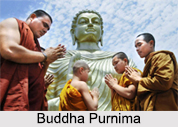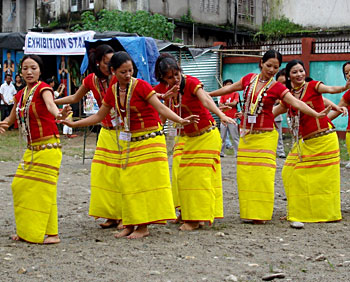 Indian Custom in Wearing Costume varies with belief, society and region. In India, every state has its individual style of traditional costume. Indians present a lot of significance to the dress materials since the earlier times. In the same way the ladies in southern India dress in different ways in different communities. The Smarta ladies, the Vaishnava ladies and the ladies of the Telugu speaking community each have a distinguishing mode of wearing their costumes.
Indian Custom in Wearing Costume varies with belief, society and region. In India, every state has its individual style of traditional costume. Indians present a lot of significance to the dress materials since the earlier times. In the same way the ladies in southern India dress in different ways in different communities. The Smarta ladies, the Vaishnava ladies and the ladies of the Telugu speaking community each have a distinguishing mode of wearing their costumes.
History of Indian Custom in Wearing Costume
Earlier times in India, the costumes were woven in Indus Valley Civilization. The costumes seem ease to put on in summer season. The cotton industry was well developed in ancient India and exported to the western countries. Some of the rock sculptures of Ajanta and Ellora demonstrate us the attractive wearing styles of dhotis by dancers and goddesses. The earlier paintings specify to the modern people about the richness of Indian traditional dress colours and designs. Many cloth weaving techniques were experienced the Ancient Indians. In the development of creating the new designs, Indians invented the new techniques among them. The ancient Indians had very brilliant talent in dying on clothes.
Women wear the cloth which directly associated with the local culture, religion and climate. Hindu sages were conversant with the play of forces like electricity and magnetism. The concentration was especially on the orthodox Brahmins, who were accumulating animal magnetism in their bodies in every moment. Hence they had laid it down as a religious obligation to wear the costume in a particular manner so that the points or folds tucked in, may, by the action of points, discharge the magnetic and other forces in a manner highly advantageous for the individual concerned. 
A man strengthening his magnetism by religious observances need not necessarily be morally pure and hence his clothes, etc., saturated with his magnetism may also be steeped in his germs of moral vices. At any rate, edges or corners of garments that are hanging out and exposed to air, they thus becoming capable of discharging out the accumulated force is condemned by the Indian sages. In fact, the sages and yogis of old had held that there was a greater loss of human magnetic force when wearing garments than when not wearing them. They hold that through the tips of fingers and toes enough force is wasted to benefit the unseen matter as intended by nature and those that care to minimize the loss to their high advantage may dress themselves as laid down in the karma "Shastras".
Indian Tradition in Wearing Costume
With the time, there is a lot of transformation occurred in the way of wearing costumes in India. The Indian traditions are also restraining by the contemporary thoughts. The metropolitan people are accepting the styles of wearing dresses from western countries. The conventional Hindus and especially the Brahmins put together a sort of religious importance to the type of dress. This significance is underlined in the religious rituals and other ceremonies. At the time of performing the marriage ceremony, a bridegroom must put on his costumes in "Panchakachcham", meaning five folds of the lower garment tucked into the waist band. The number five is considered to be a much sanctified number as expressed from the study of the origin of the expressions "panchagavya", "panchabhuta", "panchangam", "pancha-agni" and so on.
It is believed to be laid down in the "Shastras" that the clothes worn by an individual should not be worn by others. The apparent reason for this injunction may be to avoid the possibility of contact of infectious diseases. But religion goes further and says that the garments used by one if used by others are productive of other kinds of harm. Germs affecting the individuals are likely to be inoculated in the system by wearing the garments, etc., of others. The Hindu sages had held that the use of clothes was not only to serve the purpose of hiding the nakedness of mankind, but also to serve other religious and scientific purposes.
The saree is the most all-round garment in existence. It is one of the many traditional garments worn by women, yet it has in some way become the national dress of Indian women. The ghagra choli or lehanga choli along with dupatta are also the popular traditional garments for women. The salwar-kameez has evolved as a relaxing and decent garment for women in India. Kurta is also the popular traditional garments for women. The 21st century brought a lot of alteration in women dresses, now they are wearing the western dresses like Gowns, Pants, Tops Middies and Shorts.
The men in India can be found in usual western clothing. Shirts and trousers are worn by men from all areas in India. Though, men in villages are still more comfortable in traditional attire like kurtas and pyjamas, lungis, dhotis etc. Indian dressing ways are marked by several differences, both spiritual and regional with the surplus of colours, textures and styles in garments worn by the Indians.



















